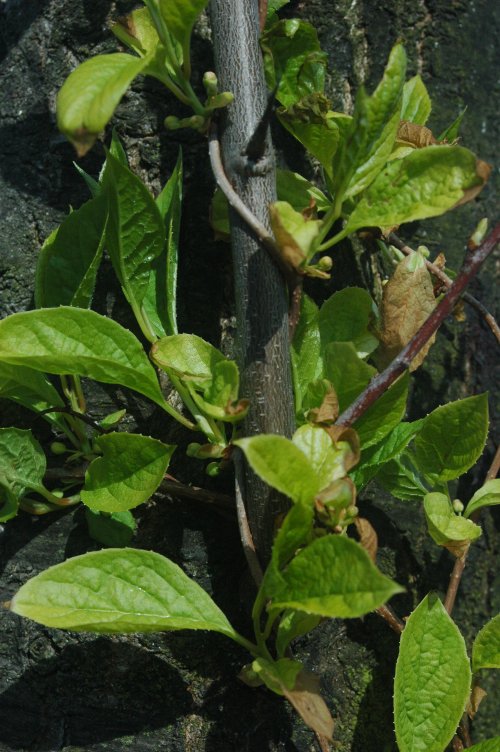This beautiful deciduous, perennial, climbing, woody vine belongs to the Schisandraceae
family. that grows about 9 m (29ft 6in) tall. The plant is found growing in mixed forests, especially on
the periphery, also by streams and brooks, and usually on sandy soils. It can grow around 30 ft. long
(9m). Common names are Chinese magnolia vine, Five-flavor-fruit, Schisandra, Schizandra,
Schizandra berry and lemon wood.
Bearing small lightly fragrant magnolia-like flowers, it will produce striking crimson berries with brown
stems (1 m of new growth a year) and can either twine round the support or spread along the ground.
Leaves are alternately arranged, tough, glossy, dark green leaves, 7 to 8 cm long and elliptically
shaped. In autumn the leaves change color to yellow. Flowers are white or pale rose to bright pink, 1.2
cm across, and bloom in springtime. The berries are borne in dense hanging clusters around 10 cm
long. Fruits are 6 mm long, ovoid berries ripening in autumn. Each berry usually contains 1–2 brownish
yellow kidney-shaped seeds that have the capacity to stay dormant and to form seed banks.
Distribution of seeds mainly occurs through birds. All these parts are fragrant and the dried wood
especially so.
Usually referred to as dioecious (male and female flowers borne on separate plants) though some
selections are monoecious (male and female flowers borne on a single plant). Female plant will only
produce fruit when fertilized with pollen from a male plant. The blossoms on the female plants are
followed by brownish red berries. They are initially green turning to scarlet red as they mature.
Magnolia berries are said to possess all five basic flavors: salty, sweet, spicy, sour, and bitter (hence
the name five-flavor-berry). They also have traditional medicine benefits (research precautions as
well).






